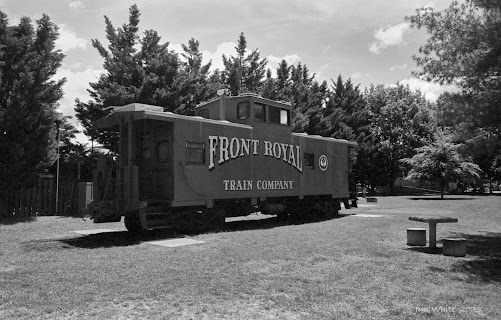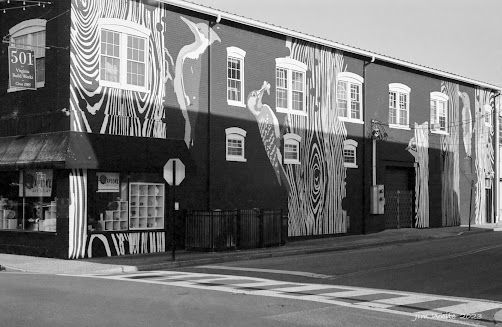Thursday, June 22, 2023
Not "if" but "when"
Thursday, June 8, 2023
Road trip to Virginia
Just returned from a ten-day road trip to Virginia to visit my daughter in Strasburg. It was a wonderful trip not only because of the visit, but it also gave me the opportunity to photo walk a small town in the area which was new to me, Front Royal.
Front Royal, Virginia is not a large town, the population is about 15,000, but it traces its roots back to the mid-1700s. The local visitors center really embraces the local history and are very proud to send you on their curated one mile, or so, walk through the historic district of the town. The walk is a well-marked history tour populated with a lot of buildings, still in use today, which were built in the late 1800s and early 1900s (there are not a lot of buildings made before that period as the Civil War took a dire toll on the area). Homes, coffee shops, restaurants, bars as well as various other businesses (a lot of law offices!) reside in those buildings. If you happen through Front Royal and are looking for food I have two restaurant recommendations. One is Main Street Mill and the other is The Daily Grind. Both were wonderful, on Main Street and well worth the stop. See this link for more on Front Royal, Virginia -
The main purpose of the trip was to complete a few "dad chores" for my daughter. It was also a great opportunity to take a few photo walks through the wonderful, historic downtown of Strasburg. As with Front Royal, and most of the small towns which populate the Shenandoah Valley, Strasburg’s history dates back the mid-1700s. Due to the abundant clay in the area, potters and other similar artisans ended up in Strasburg alongside the family farmers. The "artsy" nature of the little town, current population is about 6900, continues today. Colorful doorways, many building murals, interesting brickwork in the streets, flowers, and flags make for a very colorful main street (East King Street). The North Fork of the Shenandoah River runs just south of town on its way to its confluence with the South Fork of the Shenandoah River at Front Royal. For the history buffs in the audience, the Shenandoah River continues north from Front Royal to Harper's Ferry, West Virginia where it empties into the Potomac River, which then flows through Washington, D.C. on its way to the Chesapeake Bay and The Atlantic Ocean. Lots of history made on those bodies of water.
For this trip I brought along two film cameras and six rolls of black and white film. Five of the rolls were Ilford's XP2 Super black and white (C41 processing) and one was Ilford's HP5+ (traditional black and white processing). I came home with one unexpended roll of XP2. As for the cameras, one was a Leica M3 with a Voigtlander 28mm f/2 and the other was a Canon P with a Canon 50mm f/1.8. Each day’s walk would be with one or the other of the cameras just so I wouldn't have to think about which camera to shoot for any given situation. I very much enjoy the "one camera, one lens" mentality as it makes me work with what I have in hand. It is also in line with one of my favorite YouTube videos by the photographer Alan Schaller. The video is titled, “The liberation of limitation,” check it out.
Following the trip the five rolls I finished were developed and scanned. This was my second go with HP5+ and Kodak's HC-110 developer and I was very please with the results. The Cinestill C-41 kit also performed well. A few of my favorite images are below.
The Pancake Underground in Strasburg. Highly recommended for breakfast! HP5+ and M3.











